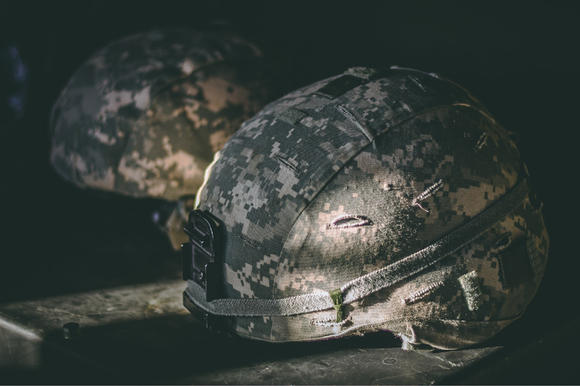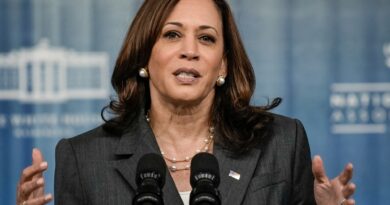The CIA’s Pursuit of Mind Control That Led to the War on Drugs and a Silent War on Veterans: Project MKUltra | DOPE Quick Reads

JR Korpa/Unsplash
Nearly 2 million veterans receive mental health services in a VA specialty mental health setting. Additionally, according to the US Department of Veterans Affairs (the VA), for the most recent service eras, roughly 11 to 20% of Veterans experience PTSD within a given year. In 2019 the Veteran population was reported by the VA as 19,797,000. This means that roughly 2,177,670 to 3,959,400 Veterans suffer from PTSD annually. This number is greater than the number of new cancer cases diagnosed in the U.S. in 2019. That number was estimated to be around 1,762,450. [i] [ii] [iii]

Israel Palacio/Unsplash
When looking at the data, there is a staggeringly high number of veterans suffering from PTSD. The Current Fiscal Year (FY2022) Budget allotted $97.6 billion to Veterans Medical Care in recent reports. $13.2 billion is dedicated to Mental Healthcare, — $599 million of which is allocated explicitly for suicide prevention outreach. Despite this being a tremendous increase in funding, many are likely curious about how this additional funding will be used to enhance Veteran mental health. [iv]
In any event, the numbers illustrate that a significant percentage of the Veteran population suffers from PTSD annually. Knowing this, it should seem to follow that increased funding for Mental Health treatment would be the no-brainer response. Even as funding has increased, the financing should be funneled into programs and precious resources to support veterans’ recovery. But, then, the amount of the funding provided can quickly become a moot point.
This is because there are now many forms of alternative medicine available or being explored, such as medical marijuana and CBD, and observing the efficacy of LSD, MDMA, and psilocybin-assisted therapy in clinical trials. Despite the increasing availability of such alternatives to treat PTSD and other symptoms experienced by 1 in 10 Veterans, former service members continue to be denied access to numerous forms of alternative healing, an unintentional effect of Project MKUltra.
With more significant funding available, what better time to revisit three key components that review the unintentional blowback of project MKUltra, which resulted in a rapid prohibition-like era known as “The War on Drugs,” whose effects subsequently trickled down to veterans seeking medical care, decades later.
1. The CIA introduced LSD to the United States on a large scale during project MKUltra.
2. Shortly after news of MKUltra became publicized in 1970, then-President Nixon would officially declare a “War on Drugs” in June 1971.
3. Despite controlled substance classifications, MDMA and psilocybin have been granted breakthrough status by the Federal Drug Administration (FDA). [v] [vi] [vii] [viii]
Project MKUltra attempts to apply the use of psychedelics for mind control.
From 1953 to 1964, the Central Intelligence Agency (CIA) carried out multiple projects under the umbrella name MKUltra. Notorious for testing psychoactive drugs on unsuspecting victims, MDMA was given the code name EA-1475. MDA, an ecstasy precursor drug, was given the code name EA-1298. The CIA sought to obtain mind control over individuals through varying psychedelic drugs. Further, it wanted to develop a Manchurian Candidate of sorts, an individual who could carry out militant and political actions as directed. Upon completing the required tasks, the individual would be granted freedom from the memory of the events. [ix]
[embedded content]
Several operations fell within the MKUltra umbrella. One operation headed by Dr. Charles Savage is Project Bluebird. Drugs, electroshock, hypnosis, and psychosurgery were all used in an effort to learn how to to control people in an interrogations. Instead, as mentioned in the above video, the distribution of psychedelic drugs throughout the U.S. had the opposite effect. Individuals, instead of blind obedience, became inquisitive and open-minded, not at all appropriate subjects for the missions sought by the U.S. [x]
In a similar project, the U.S. Army used psychedelics on soldiers stationed at Maryland’s Edgewood Chemical Arsenal in the 1950s. During this project, doctors and the U.S. Army are accused of keeping drug treatment patients ‘tripping’ for 77 days straight. (Tripping is the colloquial term to describe being ‘high on psychedelics.’) Rare video exists allegedly depicting soldiers practicing drill formations while high on LSD. [xi]
[embedded content]
Interest in gaining a psychological advantage pushed the CIA to do things such as intentionally drugging leftists and other critics such as William A Pierce, Harold Blauer, and many others, sometimes resulting in death. The atrocities only heightened with Dr. Paul Hoch, a Eugenics society member. He administered LSD to numerous patients following the dose with a lobotomy. Previously, mental health treatment was thought to be accomplished through psychosurgery, such as through the lobotomy procedure. This involved severing connections in the brain’s prefrontal cortex, often leaving patients confused and incontinent. [xii]
One book details an incident in which Dr. Hoch gave a patient a local anesthetic. During a procedure in which Dr. Hoch was removing chunks of the cerebral cortex, the Dr. is stated to have asked the patient to describe what they saw while the removal was taking place. It wasn’t long before the CIA was conducting psychedelics experiments run by Dr. Sidney Gattlieb through contracts with jails, drug treatment agencies, and mental institutions, which included the National Institute of Mental Health and the National Institute of Health agencies’ support [xiii]
[embedded content]
Then-President Nixon Declares ‘War On Drugs’ Nearly Immediately Following Publicization of Project MKUltra
As news spread in 1970 of Project MK Ultra’s existence, it cannot be overlooked that shortly after that, in June 1971, Nixon officially declared a ‘War on Drugs.’ What can be inferred from the publicization of Project MKUltra and subsequent scorn of the U.S.’s involvement in such sordid activities? Further, when the motives are allegedly for a leg up in understanding how to weaponize mind control, how does that impact the outcome? While an attempt was made to right the injustices which occurred during this period, the resulting sour taste associated with psychedelics would remain for decades. [xiv]
This widely publicized War on Drugs set the ball rolling for effects that would be felt further than most likely intended or imagined possible. Then-President Nixon ramped up his campaign against illicit drugs, including the creation of the Drug Enforcement Agency (DEA); it seems lost on most that the CIA was responsible for the injection of psychedelics into the U.S. This injection was on a large scale in conjunction with project MKUltra spanning eleven years. As the nation continued a brutal crackdown on drug users and distributors, little to no ramifications resulted in the callous actions of the CIA, leaving an understandable disdain for a seemingly dangerous class of drugs. [xv]
[embedded content]
Rather than continue learning the properties of the drug and its potential benefits, the nation veered sharply right, creating tight restrictions and controls regarding certain classifications of substances. Unlike general medication that provides the consumer with a benefit outweighing any known side effects, drugs such as LSD and psilocybin were not properly given the opportunity to be tested for potential medicinal benefits. Partially due to the drugs increasing popularity as a street drug and party favor, strict laws regarding the possession and use of the drug dampened much hope of any research breakthroughs. [xvi]

Goashape/Unsplash
Now, in reviewing the timing of the War on Drugs, there is sufficient evidence to warrant an inquiry into the U.S.’s actual motives. Other assertions related to Nixon’s race-based motives have also been asserted, but little evidence exists to back either claim. [xvii] Despite this, with a new perspective, it seems logical to allow psychedelics the due process of being researched and investigated to confirm whether any real health benefits exist from ingesting the substance. [xvii]
Federal Drug Administration Grants Breakthrough Status to MDMA and Psilocybin
The FDA granted breakthrough therapy designation for MDMA-Assisted Therapy for PTSD and Psilocybin Therapy for Major Depressive Disorder, a major leap in terms of acceptance of alternative medicine. The breakthrough status allows closer coordination with the FDA and fast-tracking of many components due to satisfying an unmet need. Both MDMA and Psilocybin have been used in clinical trials, with the results promising for each. [xviii] [xix]
An example is a clinical trial detailed in an article titled MDMA-assisted therapy for severe PTSD. The study was randomized, double-blind, and placebo-controlled. The study was intended to determine the efficacy of MDMA-assisted treatment in treating patients with severe PTSD. It aimed to address issues such as depression and dissociation and substance and alcohol abuse disorders. Results of the study indicated MDMA-assisted therapy was highly efficacious in those who suffered from severe PTSD, with treatment being well-tolerated and safe. [xx]
[embedded content]
Reports continue to confirm that there are many individuals who, despite its illegality, have successfully treated their mental disorders with the use of psychedelics. [xxi] Since an increased amount of funding has been allocated specifically to address mental health, shouldn’t it be time to advocate for authentic and equitable access to healthcare for Veterans? Equitable to include access to medical marijuana and psychedelic drug trials.
It is questionable whether the U.S. would back such legislation; however, states like Oregon have already begun carving out their own laws regarding various substances. [xxii] Now is the opportunity to put Veterans at the forefront of innovative mental health advances. Is this not the least that can be done to honor those who have served if it is their desire?
Many veterans are noted as becoming inadvertent lobbyists for the decriminalization of psychedelic drugs because of their success stories with drugs over traditional prescription medications. Why is the Nation fighting so hard against those who fought so hard to protect the very Nation that is now denying equitable healthcare access to veterans? [xxiii]
Follow Me on NewsBreak for More Great Content!

Charnell Gilchrist
References
[i] U.S. Department of Veterans Affairs, How Common is PTSD in Veterans? – PTSD: National Center for PTSD (va.gov), (Mar. 23, 2022)
[ii] U.S. Department of Veterans Affairs, Veteran Deaths by Suicide: Crude and Adjusted Rates by Sex, 2001-2019, (2022)
[iii] The American Cancer Society, Cancer Facts & Figures 2019 | American Cancer Society, (2022)
[iv] House Committee on Appropriations Press Release, Appropriations Committee Releases Fiscal Year 2022 Military Construction, Veterans Affairs, and Related Agencies Funding Bill | House Committee on Appropriations, (Jun. 24, 2021)
[v] Committee on Intelligence, Project MKUltra, the CIA’s Program of Research in Behavioral Modification, (Aug. 3, 1977)
[vi] History.com Editors, War on Drugs – Timeline in America, Definition & Facts – HISTORY, (Dec. 17, 2019)
[vii] Multidisciplinary Association for Psychedelic Studies, FDA Grants Breakthrough Therapy Designation for MDMA-Assisted Therapy for PTSD, Agrees on Special Protocol Assessment for Phase 3 Trials – Multidisciplinary Association for Psychedelic Studies – MAPS, (Aug. 26, 2017)
[viii] Paul Austin, FDA Breakthrough Therapy Designation to Psilocybin Therapy (thethirdwave.co), (Dec. 28, 2019)
[ix] John Potash, Drugs as Weapons Against Us, (2015) Trine Day Publisher Waterville, OR
[x] Id.
[xi] David Martin, Vets feel abandoned after secret drug experiments | CNN, (Mar. 1, 2012)
[xii] The Editors of Encyclopaedia Britannica, lobotomy | Definition, Procedure, History, Effects, & Facts | Britannica (Feb. 21, 2021)
[xiii] John Potash, Drugs as Weapons Against Us, (2015) Trine Day Publisher Waterville, OR
[xiv] History.com Editors, War on Drugs – Timeline in America, Definition & Facts – HISTORY, (Dec. 17, 2019)
[xv] History.com Editors, War on Drugs – Timeline in America, Definition & Facts – HISTORY, (Dec. 17, 2019)
[xvi] Id.
[xvii] Id.
[xviii] Multidisciplinary Association for Psychedelic Studies, FDA Grants Breakthrough Therapy Designation for MDMA-Assisted Therapy for PTSD, Agrees on Special Protocol Assessment for Phase 3 Trials – Multidisciplinary Association for Psychedelic Studies – MAPS, (Aug. 26, 2017)
[xix] Paul Austin, FDA Breakthrough Therapy Designation to Psilocybin Therapy (thethirdwave.co), (Dec. 28, 2019)
[xx] Jennifer Mitchell, Michael Bogenschutz, Rick Doblin, MDMA-assisted therapy for severe PTSD: a randomized, double-blind, placebo-controlled phase 3 study, Published: 10 May 2021; Nature Medicine.
[xxi] Id.
[xxii] Lizzy Acker, Oregon becomes first state to legalize psychedelic mushrooms – oregonlive.com, (Nov. 4, 2020)
[xxiii] Andrew Jacobs, Veterans Have Become Unlikely Lobbyists in Push to Legalize Psychedelic Drugs – The New York Times (nytimes.com), (Nov. 11, 2021)
This article has been archived for your research. The original version from NewsBreak Original can be found here.

